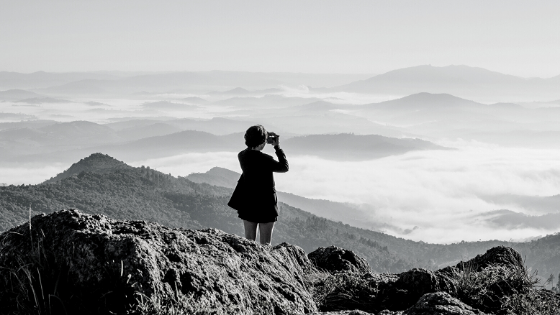To acclimatise, we need to adjust to new heights.
From a physiological perspective, our bodies change when we go higher up on the planet. At sea level, 21% of the air we breathe is oxygen. When we go up higher, the number of molecules that we breathe, per breath of oxygen, is reduced. At a high altitude, low pressure can cause fluid to leak from capillaries. This can fill up your lungs and add fluid in the brain. This is called altitude sickness.

At 12,000 feet, which is 3,658 meters, there are 40% fewer oxygen molecules per breath. It takes some time for the body to adapt: the depth of respiration increases, pressure on pulmonary arteries increases, and your body produces more red blood cells to move oxygen around the body.
So, how is this relevant to you?
Well, it’s an interesting metaphor because there are things that happen to us in our professional experiences that cause a need for acclimatisation.
Two leaders I work with are shifting into new roles. This means promotions with new responsibilities, and things they haven’t done before. One person had been a solo technician and now is managing a team across the business. This is a big shift. When you go from just running your own show to all of a sudden managing a bunch of people, it can be one of the major professional challenges that we experience. It’s a whole different ball game.
As a result there is a whole new level of complexity and people stuff that we need to handle.
How do we handle it?
First, there’s the biochemical adjustments that we need to make when we acclimatise. Just like when you go from sea level to a higher elevation, you need to take time to adjust. The body needs time to adjust. Biochemically, when we shift from an existing level of responsibility to a bigger one, we need to help our bodies deal with that.
It’s called stress management. Our bodies can go into fight and flight when we have these new experiences. We have an inner conversation that goes, “Can I do this? Will I be any good at this? What if I screw up?” That puts us into an unhelpful amygdala hijack, where we’re in survival mode, with an elevated heart rate, shallow breathing, disturbed sleep, you name it. We need to do biochemical adjustments through intensive stress management, meditation, deep breathing, and exercise.
Self care becomes incredibly important. The increased scope of responsibilities results in a higher demand on the body and a higher demand on our intelligence and our skills.
I have a mentor who talks about executive fitness, or performance fitness, or speaker fitness. The more we do something, the more energy we require to do it. We need a whole different practice in order to support the increased level of responsibility, capability and activity.
The second thing we need is support. This kind of adjustment is not for the faint of heart. The internal dialogues with the inner gremlin are real challenges. Niggling self-doubt and worry can be quite isolating and difficult.
Support can come in the form of mentors, coaches or peers. It’s so important to be in a group that helps teach us new skills and capabilities.
There’s a couple of catch phrases that I think are useful to remember if you’re looking to transition, or you’re in the middle of a transition and needing to acclimatise:
“New altitude needs new attitude.” One of the key shifts in attitude is to go from a fear of loss, which is part of the amygdala hijack we experience when we’re going from one stage to another stage. We can replace the fear of loss with a love of learning. It’s a very big shift in direction and orientation, but that new altitude needs that new attitude.
And the second one is that “New altitude needs new aptitude.” We really need to hone and harness different skills and practices at that new level, to develop that executive fitness at the new level that we’re experiencing.
The third piece is to remember that, “How you see is how you be.” So if we climb to a new metaphorical, or actual, height, how we look out from that new perspective determines how we experience it. We need to lean in with courage and openness. We need to bring a willingness to observe and learn, in order to adjust to the new altitude.
When we go high, we can see so much further.
This is incredibly important for leaders. We need to expand our perspective. Take time to enjoy the climb to new heights to make sense of it. What we see at higher altitudes is quite different to what we see from ground level.
When I go bush walking, what we can see when we are at the bottom of a valley is quite different when we start to climb. In the valley we can feel quite cozy, contained, and safe. As soon as we start climbing the high mountains, it’s a whole different story. It’s steep, it’s destabilising. At the same time we can start to see how the valley is formed. We can see over the horizon into different valleys, and different mountain landscapes and therefore to new opportunities and new directions.
We can stay safe on the ground or we can climb heights. If we do, we must endure the destabilisation and the acclimatisation that’s required. In doing so we gain a whole new, broader perspective that reveals opportunities not seen before.
How can you get higher on your leadership journey? What might you need to practice and put in place to handle the acclimatisation process?



















